This blog post was written by NCTE member Theodora (Lolly) Salazar. It’s part of Build Your Stack,® an NCTE initiative focused exclusively on helping teachers build their book knowledge and their classroom libraries. Build Your Stack® provides a forum for contributors to share books from their classroom experience; inclusion in a blog post does not imply endorsement or promotion of specific books by NCTE.
Searching for Something to Read
I became an independent reader at the age of five. My parents suggested books for me. We visited the library and selected books to enjoy. When I started reading Highlights magazine, I started to see that there were different types of writing out in the world: jokes, poems, short stories, and more. That was my entry into the search for reading material in many places other than the library.
As I grew up, I began to rely on suggestions from other readers, recommendations printed in children’s magazines, and other sources. Now as an adult reader, I incessantly scour the library’s website,Twitter, Goodreads, professional journals, blog posts, publisher’s sites, and professional books written about books to find recommendations of books to read and how they can be used in the classroom. The Ramped Up Read Aloud by Maria Walther (Corwin Literacy) is one recent book that comes to mind.
Another practice I have participated in for several years now is the #bookaday challenge during the summer. It was launched by none other than independent reading proponent and reading enthusiast extraordinaire Donalyn Miller. Participating in the challenge helps garner many book titles and provides a preview of how the books can be used in classrooms, what topics a book covers, and suggested grade levels to use them with. Not only do I find recommendations for what to read, but I also read them! This allows me a wide range of touchstone books that I can recommend to others.
Now how do I get them into the hands of kids?
You hear it said time and again, “Get to know your students.” It really is important to get to know them, whether through conversations, conferences, written responses, journal entries (if students allow you to read them), or other activities. In getting to know students, you will also be more likely to find books that can help a student connect with characters who experience something similar to what they have experienced or with whom they can identify. It may help bring different mindsets to students’ reading lives that can spill over into their everyday lives.
Imagine students exercising empathy for someone in their class who may have lost a pet, because they read about how a character dealt with it in The Tenth Good Thing about Barney by Judith Viorst ((illustrated by Erik Blegvad). In this book, a small boy loses his cat Barney. His mother suggests they have a funeral, also encouraging the boy to think of ten good things about Barney. Perhaps students learn about being resilient from Sadako in Sadako and the Thousand Paper Cranes by Eleanor Coerr (illustrated by Ronald Himler), as Sadako tries to complete folding one thousand paper cranes so she can be cured of the illness she is afflicted with years after the bombing of Hiroshima. Perhaps students can relate to characters in Hiroshima by Laurence Yep and identify with other children in war-torn countries who have to figure out how to deal with the fear associated simply with going to school.
Unfortunately there are many students in our classrooms who may not know how to deal with different feelings and situations, but the right book placed in their hands by a teacher who is aware of their personal stories can make a world of difference.
It is my hope that teachers will seek out knowledge about books and stories that can meet their students’ reading needs. Books find their way into our hands at just the right time we need them. Be the teacher who can suggest just the right one.
Here are some other go-to books from my stack that help students explore their emotions.
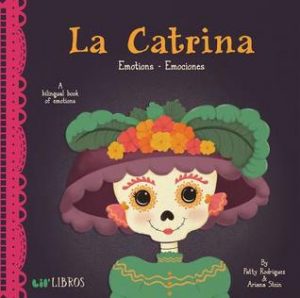 La Catrina Emotiones/Emociones by Patty Rodriguez and Ariana Stein, illustrated by Citali Reyes.
La Catrina Emotiones/Emociones by Patty Rodriguez and Ariana Stein, illustrated by Citali Reyes.
This book is great for young readers to be introduced to emotional expressions in English and Spanish.
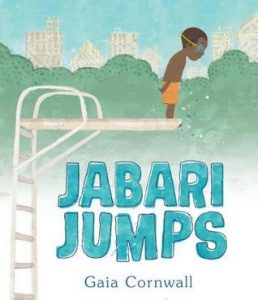 Jabari Jumps by Gaia Cornwall
Jabari Jumps by Gaia Cornwall
Taking a giant leap into anything you are learning or haven’t done before takes courage. Jabari finds his as he takes a plunge.
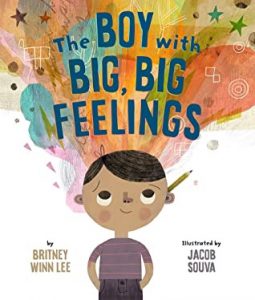 The Boy with the Big, Big Feelings by Britney Winn Lee, illustrated by Jacob Souva
The Boy with the Big, Big Feelings by Britney Winn Lee, illustrated by Jacob Souva
An awesome book to show boys and girls that it is okay to have deep feelings. It validates that boys can certainly feel and not be less of a boy because of the feelings he wants to express.
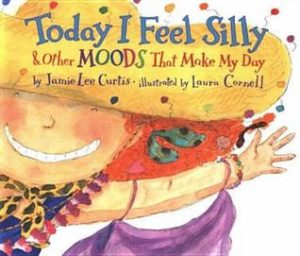 Today I Feel Silly and Other Moods That Make My Day by Jamie Lee Curtis, illustrated by Laura Cornell
Today I Feel Silly and Other Moods That Make My Day by Jamie Lee Curtis, illustrated by Laura Cornell
A fun read in verse. Children can explore the many moods they may experience throughout their day from being silly to being cranky or sad. It helps them see that it is okay to have changing moods.
 Angry Octopus by Lori Lite, Illustrated by Max Stasuyk
Angry Octopus by Lori Lite, Illustrated by Max Stasuyk
Everybody needs to learn to relax and unwind. We also need to learn to manage our anger and frustration. In this gem a sea child teaches an angry octopus to calm himself by learning to breathe and get control of his feelings.
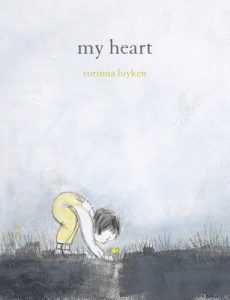 My Heart by Corinna Luyken
My Heart by Corinna Luyken
The lyrical text and beautiful illustrations empower a reader to love and accept themselves for who they are.
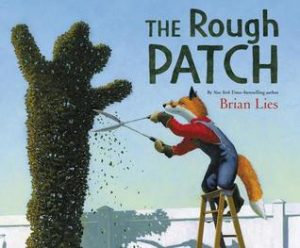 The Rough Patch by Brian Lies
The Rough Patch by Brian Lies
Evan experiences the loss of his dog and chooses not to foster the garden he and his dog would enjoy together. His heartbreak keeps him from enjoying it. One day he discovers that beauty can grow out of the misery he feels.
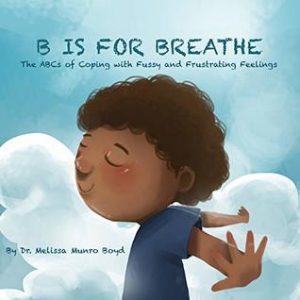 B is for Breathe: The ABCs of Coping with Fussy and Frustrating Feelings by Melissa Boyd
B is for Breathe: The ABCs of Coping with Fussy and Frustrating Feelings by Melissa Boyd
Everybody likes a good ABC book! This one inspires kids to talk about their feelings and practice ways to calm themselves down whether they are afraid, upset, sad, etc.
 Just Ask: Be Different, Be Brave, Be You! by Sonia Sotomayor, illustrated by Rafael López
Just Ask: Be Different, Be Brave, Be You! by Sonia Sotomayor, illustrated by Rafael López
Using her personal lived experience of being diagnosed with diabetes at a young age, Judge Sotomayor drives home the point that instead of jumping to conclusions about others different from us, all we have to do is ask. Sometimes it is in asking that we preserve the other person’s feelings.
 Millie Fierce by Jane Manning
Millie Fierce by Jane Manning
Millie is a kind and quiet girl who gets overlooked often. She decides she will be fierce. Unfortunately she is deemed mean. She realizes that she must change her ways, but knows she can be fierce on the inside to stand up for herself when she needs to.
 Theodora (Lolly) Salazar has been teaching since 1990. She is currently an Academic Technology Instructional Support teacher in San Antonio, Texas. She loves to read and write and likes to encourage others to do the same. Having a conversation about books brings her so much joy. If you engage in a conversation with her, you had better have a little time to do so! You can find her on Twitter sharing #bookaday posts during the summer. Twitter: @SalazarLolly. Instagram: @reading_teacher32
Theodora (Lolly) Salazar has been teaching since 1990. She is currently an Academic Technology Instructional Support teacher in San Antonio, Texas. She loves to read and write and likes to encourage others to do the same. Having a conversation about books brings her so much joy. If you engage in a conversation with her, you had better have a little time to do so! You can find her on Twitter sharing #bookaday posts during the summer. Twitter: @SalazarLolly. Instagram: @reading_teacher32
It is the policy of NCTE in all publications, including the Literacy & NCTE blog, to provide a forum for the open discussion of ideas concerning the content and the teaching of English and the language arts. Publicity accorded to any particular point of view does not imply endorsement by the Executive Committee, the Board of Directors, the staff, or the membership at large, except in announcements of policy, where such endorsement is clearly specified.

